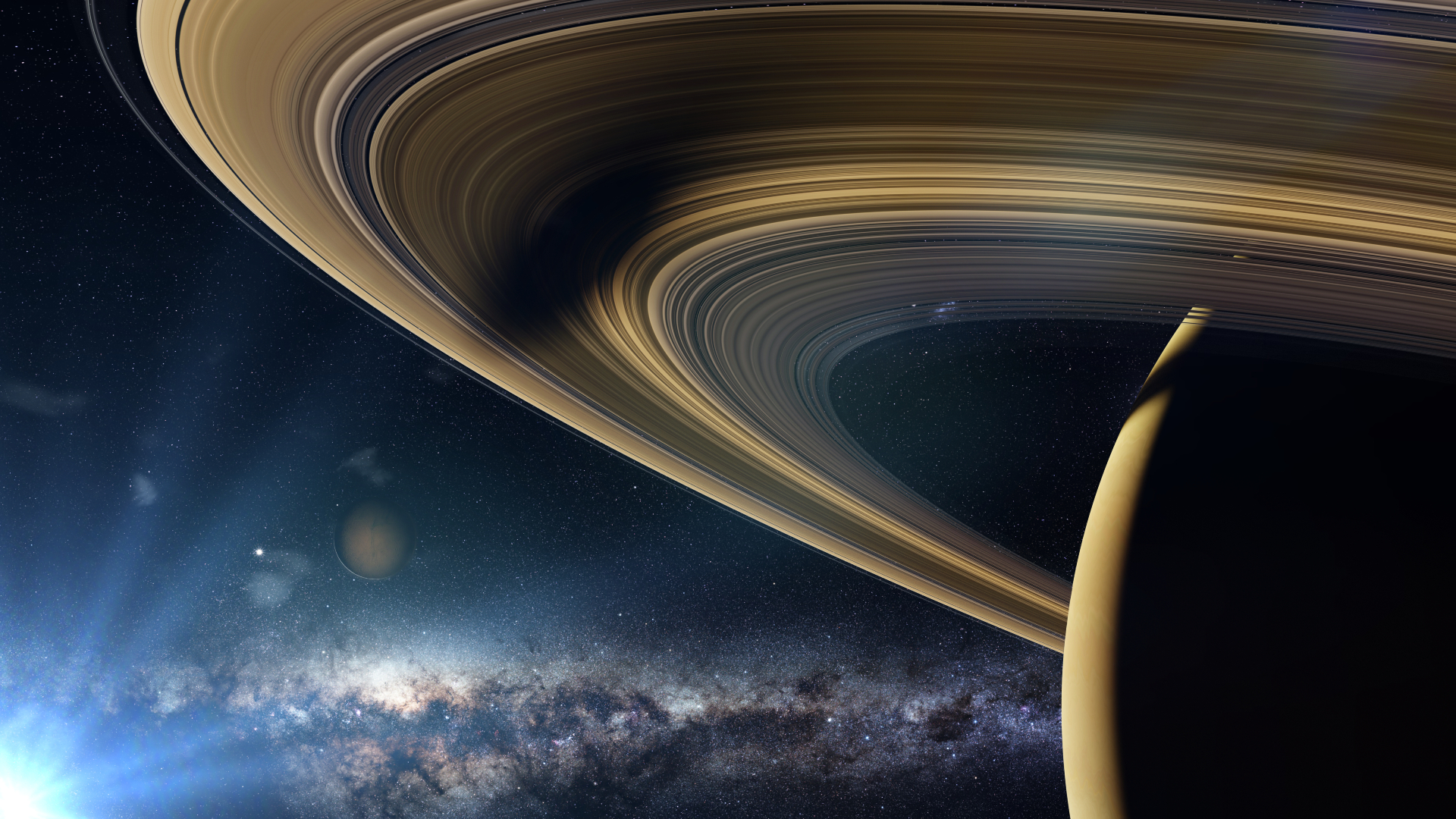When we ask children about their favorite planet, they say Saturn. It's not difficult to understand why. With its stunning rings, bright colors, and fascinating moons, Saturn is a truly spectacular sight in our solar system. But what would happen if we were to actually travel to Saturn, and how would its gravity impact us? In this blog, we'll explore the journey to Saturn, the experience of jumping on Saturn. So why late? Put on your own space suit and take a seat in Awais Mughal's space craft. Because today I am taking you on an exciting journey to Saturn.
To begin our journey to Saturn, we first need to understand how far away it is from Earth. Saturn is the sixth planet from the Sun, and it is located approximately 886 million miles away from us. Because of this vast distance, it would take a long time to travel to Saturn, even with our most advanced spacecraft. Currently, the fastest spacecraft ever launched is the Parker Solar Probe, which travels at speeds of up to 430,000 miles per hour. At that speed, it would take about 6.5 years to reach Saturn.
Assuming we could reach Saturn, what would happen if we were to jump on its surface? First, we need to understand the conditions on the planet itself. Saturn is a gas giant, which means that it has no solid surface like Earth or Mars. Instead, its atmosphere gradually transitions into a thick, soupy layer of gas that gets denser and denser as you move closer to the core. Eventually, the pressure and temperature at the center of the planet become so intense that hydrogen gas becomes metallic and the planet has a solid core.
So, if you were to jump on Saturn's upper atmosphere, you would simply fall through it until you reached the denser layers beneath. Because there is no solid surface to land on, you would continue to fall until you reached the metallic hydrogen core. The exact amount of time this would take would depend on a number of factors, including your initial velocity and the density of the layers you pass through. However, it's safe to say that you would not survive the journey.
Of course, jumping on Saturn is not something that anyone would actually attempt, and even getting close to the planet would be incredibly dangerous. Saturn's gravity is so strong that it can pull objects towards it from vast distances away. This means that any spacecraft that approaches Saturn needs to be carefully controlled to avoid crashing into the planet. In fact, the Cassini spacecraft, which orbited Saturn from 2004 to 2017, had to make a series of complex maneuvers to avoid crashing into the planet's atmosphere.
So, what would happen if we did manage to land on Saturn's surface, assuming it had one? The answer is that we would be crushed by the planet's intense gravity. Saturn's mass is approximately 95 times that of Earth, which means that its gravity is almost 2.5 times as strong as Earth's. This means that any objects or people on Saturn would weigh almost 2.5 times as much as they do on Earth. Even if we could somehow survive the journey to Saturn, we would not be able to survive on the planet itself.
Given these challenges, it's understandable why scientists have focused their attention on exploring Saturn's moons instead. There are currently 82 known moons orbiting Saturn, with the largest and most famous being Titan. Titan is the only moon in our solar system with a dense atmosphere, and it is believed to have lakes and seas of liquid methane and ethane on its surface. Because of its unique conditions, scientists believe that Titan could potentially support life, making it a much more interesting destination than Saturn itself.
CONCLUSION
In conclusion, while Saturn is a beautiful and fascinating planet, it is also an incredibly inhospitable one. Its lack of a solid surface, intense gravity, and extreme atmospheric conditions make it an extremely challenging and dangerous place to explore. Instead, scientists have turned their attention to Saturn's moons, particularly Titan, as a more promising destination for future space exploration.
In addition to its potential for supporting life, Titan also offers a unique opportunity for scientific discovery. Its thick atmosphere and hydrocarbon lakes make it a valuable target for studying the origins of life and the conditions necessary for it to exist. There are also several other moons around Saturn that have interesting features and may hold secrets about the planet's formation and evolution.
In conclusion, while the idea of visiting Saturn may be a dream for many, the reality is that it is an incredibly difficult and dangerous destination. Instead, scientists and space agencies should focus on exploring Saturn's moons, particularly Titan, which offer more promising opportunities for scientific discovery and potential for supporting life. As we continue to push the boundaries of space exploration, it is important to prioritize safety and the potential for meaningful discoveries in our missions.

